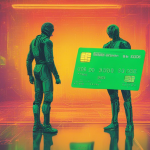Increase Your Investment Portfolio through Asset Tokenization: A Must-Read Guide for Modern Investors

Welcome to the world of asset tokenization. In this guide, we will explore the concept and significance of asset tokenization, a revolutionary approach that has the potential to transform traditional investment strategies. By leveraging blockchain technology, investors now have access to a wide range of tokenized assets, including real estate, art, collectibles, commodities, and more. Let’s delve into the basics and discover how asset tokenization can enhance your investment portfolio.
The Basics of Asset Tokenization
Asset tokenization refers to the process of transforming traditional assets into digital tokens. These tokens represent ownership or shares in a particular asset, granting investors fractional ownership or access to its value. The benefits of asset tokenization are immense, as it allows for improved liquidity, fractional ownership, and increased accessibility for investors. Moreover, blockchain technology plays a crucial role in facilitating secure and transparent transactions, ensuring that asset tokenization is both efficient and trustworthy.
Types of Assets Suitable for Tokenization
Real estate: Unlocking new investment opportunities
Tokenization of real estate assets enables investors to diversify their portfolios with fractional ownership of properties. It provides access to various real estate markets that were previously inaccessible due to high entry barriers. Investors can enjoy the benefits of rental income, property value appreciation, and potential tax advantages.
Art and collectibles: Democratizing the market
Tokenization democratizes the art market by allowing investors to own fractional shares of high-value artworks or collectibles. It enhances liquidity, making it easier for investors to buy, sell, and trade art tokens. Art and collectible tokenization ensures transparency and provenance verification, mitigating concerns about authenticity and fraud.
Commodities and resources: Reshaping access for investors
Tokenization of commodities (e.g., gold, oil, natural gas) and resources (e.g., timber, minerals) allows investors to diversify their portfolios. It provides a more efficient and accessible way to invest in these assets, eliminating intermediaries and reducing transaction costs. Investors can benefit from owning fractional shares of commodities and resources, balancing risk and potentially generating returns.
Understanding Tokenization Platforms and Exchanges
Tokenization platforms serve as the foundation for creating and managing tokenized assets. These platforms facilitate the issuance, trading, and management of tokens, ensuring a seamless investment experience. When evaluating a tokenization platform, it’s important to consider factors such as security, transparency, regulatory compliance, and user experience. Additionally, choosing reputable exchanges that list tokenized assets is crucial, as they provide liquidity and a marketplace for buyers and sellers. Investors should prioritize platforms and exchanges that prioritize investor protection and adhere to stringent security protocols.
Regulatory Frameworks and Legal Considerations
Global regulatory landscapes are continuously evolving when it comes to tokenization. It’s essential for investors to navigate the legal complexities surrounding tokenized assets to ensure compliance and protect their investments. Jurisdictions vary in their approach to tokenization, with some adopting favorable regulations, while others are still in the early stages of establishing frameworks. Investors must align with reputable and compliant platforms, understand any restrictions or requirements, and consult legal experts to navigate the ever-changing legal landscape successfully.
Benefits and Risks of Asset Tokenization
Asset tokenization provides several advantages for modern investors, including:
Enhanced liquidity: Tokenized assets can be traded more quickly and easily, eliminating the traditional illiquidity associated with some asset classes.
Fractional ownership: Tokenization allows for fractional ownership, enabling investors to diversify their portfolios and access previously unattainable assets.
Increased accessibility: Tokenization lowers entry barriers, granting investors access to markets and assets that were once restricted only to high-net-worth individuals.
Transparency and security: Blockchain technology ensures transparency in transactions and reduces the risk of fraud or manipulation.
However, investors must also be aware of potential risks and take appropriate measures to mitigate them. Some risks include:
Volatility: Tokenized assets can still be subject to market fluctuations, just like traditional assets.
Regulatory challenges: The evolving and diverse regulatory landscape surrounding tokenization may pose regulatory risks.
Lack of valuation standardization: Due to the novelty of tokenization, there may be challenges in establishing consistent valuation methodologies.
Evaluating Tokenized Investments
Before investing in tokenized assets, it’s crucial to consider certain key factors, including:
Market conditions and trends: Assess the current state and potential growth of the specific market in which the asset operates.
Liquidity: Evaluate the ease with which tokenized assets can be bought, sold, or traded within the chosen platform or exchange.
Valuation methodologies: Understand how the value of tokenized assets is determined and the potential impact on investment returns.
Investing in Real Estate through Tokenization
Real estate tokenization offers numerous benefits for investors, such as:
Fractional ownership of properties: Investors can purchase fractional shares of high-value properties, diversifying their investment portfolios.
Increased liquidity: Tokenization enables investors to buy, sell, or trade real estate assets more efficiently.
Enhanced access: Investors can participate in real estate markets that were previously inaccessible due to high barriers to entry.
Case studies showcasing successful real estate tokenization projects provide practical examples and insights into the potential returns and challenges associated with these investments.
Exploring Tokenization in Art and Collectibles
Tokenization unlocks the potential of art and collectible investments by:
Democratizing the market: Fractional ownership allows investors to own shares in valuable artworks, regardless of their budget.
Enhanced liquidity: Tokenized art assets can be easily traded, providing investors with increased flexibility.
Ensuring authenticity and provenance: Blockchain technology can verify the authenticity and provenance of art and collectibles, reducing the risk of acquiring counterfeit or stolen pieces.
Investing in Commodities and Resources via Tokenization
Tokenization presents an opportunity to revolutionize investments in commodities and resources by:
Improving accessibility: By fractionalizing ownership, tokenization makes it easier for investors to participate in these markets.
Diversification and risk management: Tokenized ownership of commodities and resources allows for portfolio diversification and risk mitigation.
Environmental and ethical considerations: Tokenization can facilitate investments in sustainable commodities and resources, aligning with investors’ environmental and ethical goals.
Tokenization in the Financial Industry
Tokenization has the potential to transform traditional financial assets by:
Facilitating the issuance and trading of tokenized securities, such as stocks, bonds, and derivatives.
Increasing efficiency and reducing costs associated with traditional financial transactions.
Presenting regulatory challenges as authorities adapt to this new landscape, requiring innovative solutions to ensure compliance and investor protection.
The Future of Asset Tokenization
With projected growth and ongoing innovations, asset tokenization is poised to shape global financial markets. Future developments may include advancements in blockchain technology, increased adoption by institutional investors, and the emergence of new asset classes for tokenization. As this industry evolves, investment opportunities and market trends will continue to transform.
Risks and Challenges in Asset Tokenization
Investors must be aware of the risks and challenges associated with asset tokenization:
Security vulnerabilities and cyber threats: The digital nature of tokenized assets makes them susceptible to hacking and cyber-attacks.
Regulatory uncertainties: The lack of standardized regulations globally may pose challenges for investors and asset issuers.
Mitigating risks: Investors and issuers must implement robust security measures and stay updated on regulatory changes to safeguard their investments.
Conclusion
In conclusion, asset tokenization offers a compelling opportunity for modern investors to diversify their portfolios and access previously inaccessible markets. By leveraging blockchain technology, investors can enjoy the benefits of enhanced liquidity, fractional ownership, and increased transparency. However, it is crucial to fully understand the regulatory landscape, evaluate risks, and choose reputable platforms and exchanges. Asset tokenization is an exciting avenue that has the potential to reshape the world of investments, and we encourage all investors to explore this innovative approach.









